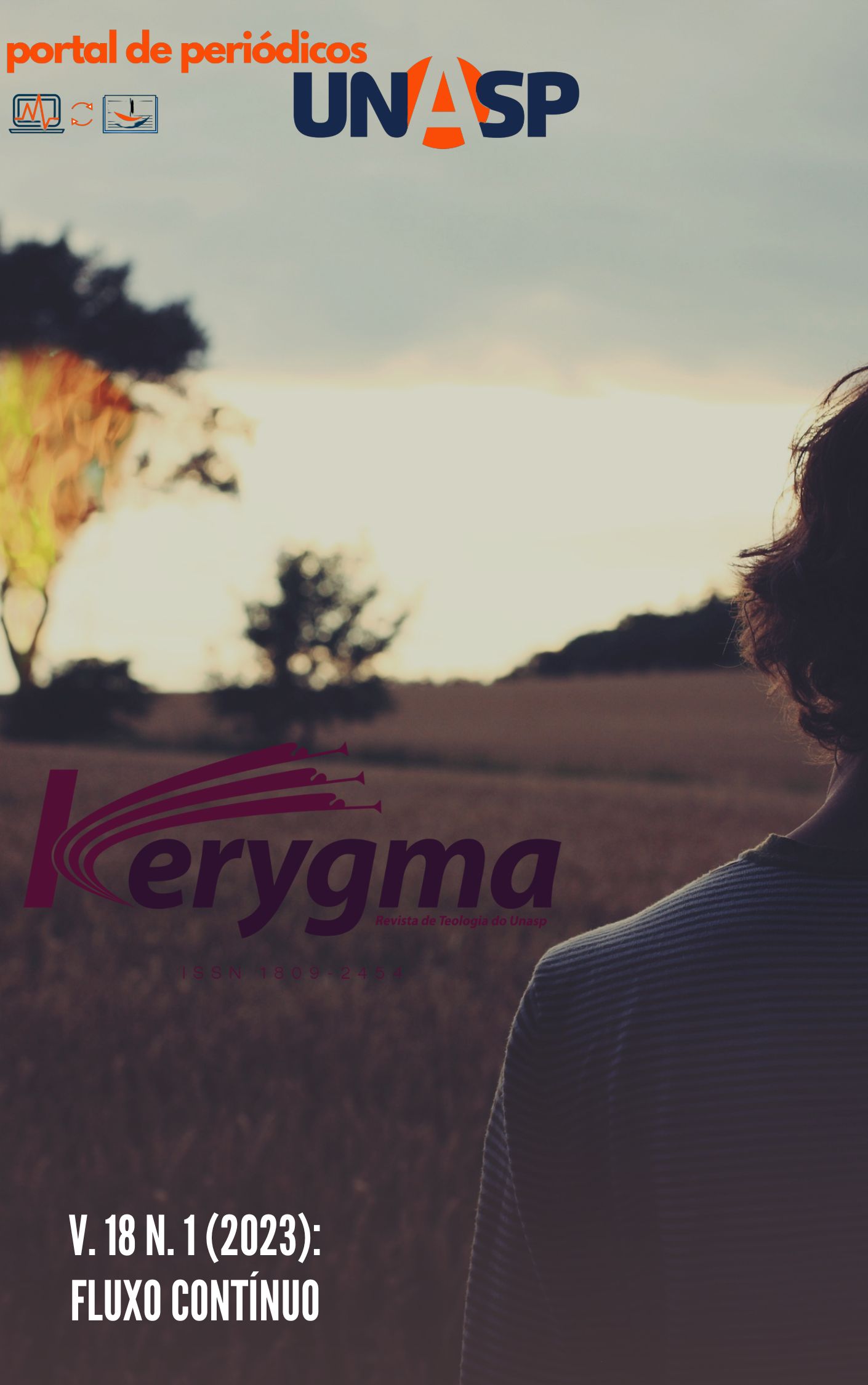Abstract
Human civilizations have always demonstrated zeal and reverence when disposing of the dead at all times. Among Easterners, cremation has been the predominant practice. In Jewish and Christian cultures, tomb burial has been the most common, but in recent decades cremation has become a dominant practice in many Western countries. The popularization of crematoriums in the West raises the important question whether the Bible offers prescription on the decision to cremate or bury the dead. This article reflects on burial and cremation, their occurrence in history, their current rates, and what the Bible has to say about them. The biblical accounts of burial, punishment by fire and cremation are approached from a theological point of view, with the aim of understanding the nature of the account whether prescriptive or not. The essential thing in discussing the issue is to highlight the biblical hope of the restoration of all things in Christ, including the resurrection of human beings to immortal life or to judgment.
References
BÄR, Walter; et al. “Postmortem Stability of DNA.” Forensic Science International. N. 39, 1988, p. 59-70.
BEALE, G. K. The Book of Revelation. The New International Greek Testament Commentary. Grand Rapids, MI: Eerdmans, 2013.
BERGEN, Robert D. 1, 2 Samuel. The New American Commentary. Vol. 7. Nashville: Broadman & Holman Publishers, 1996.
BÍBLIA, Português. A Bíblia Sagrada: Antigo e Novo Testamento. Trad. João Ferreira de Almeida. 2ª ed. rev. e atualizada no Brasil. Barueri, SP: Sociedade Bíblica do Brasil, 1993.
CALVIN, John. Institutes of the Christian Religion. Philadelphia: The Westminster Press, 1960.
COWLING, Charles. The Good Funeral Guide: Everything You Need to Know. New York: Continuum, 2010.
Cremation Association, disponível em https://www.cremationassociation.org/page/IndustryStatistics, em 20/08/2022.
Cremation Society, disponível em https://www.cremation.org.uk/International-cremation-statistics-2019, em 20/08/2022.
CROSS, F. L.; LIVINGSTONE, Elizabeth A. (orgs.). The Oxford Dictionary of the Christian Church. Oxford; New York: Oxford University Press, 2005.
DAVIES, Douglas J. The Theology of Death. New York: T & T Clark, 2008.
DAVIES, Douglas. Death, Ritual and Belief: The Rhetoric of Funerary Rites. 3a ed. New York: Bloomsbury, 2017.
DAVIES, Douglas; RUMBLE, Hannah. Natural Burial: Traditional-secular Spiritualities and Funeral Innovation. New York: Continuum, 2012.
DECKER, Rodney J. “Is it Better to Bury or Burn? A Biblical Perspective on Cremation and Christianity in Western Culture”. William R. Rice Lecture Series. Allen Park, MI: Detroit Baptist Theological Seminary, March 15, 2006.
EAGER, Geo B. “Cremation.” The International Standard Bible Encyclopedia. Ed. James Orr et al. Chicago: The Howard-Severance Company, 1915.
FOURNIER, Elizabeth. The Green Burial Guidebook: Everything you Need to Plan an Affordable Environmentally Friendly Burial. Novato: California: New World Library, 2018.
GANE, Roy E. Old Testament Law for Christians: Original Context and Enduring Application. Grand Rapids, MI: Baker Academic, 2017.
GEISLER, Norman L.; POTTER, Douglas E. “From Ashes to Ashes: Is Burial the Only Christian Option.” Christian Research Institute. April 14, 2009. Disponível em https://www.equip.org/articles/is-cremation-christian/, 05/25/2023.
HARRIS, Mark. Grave Matters: A Journey through the Modern Funeral Industry to a Natural Way of Burial. New York: Scribner, 2007.
HARRIS, R. Laird. “Leviticus.” The Expositor’s Bible Commentary. Ed. Frank E. Gaebelein. Vol. 7. Grand Rapids, MI: Zondervan, 1990.
“History of cremation in America,” disponível em https://simplycremationservice.com, em 20/08/2022.
JONES, David W. “To bury or burn? Toward an ethic of cremation.” Journal of Evangelical Theological Society (JETS) 53/2. June 2010.
JONES, Elizabeth D. Ancient DNA: The Making of Celebrity Science. New Haven, CT: Yale University Press, 2022. Kindle ed.
KANEKO, Yu; et al. “Comparison of hard tissues that are useful for DNA analysis in forensic autopsy.” Legal Medicine. N. 17. 2015, p. 547-552.
KRATZER, Walter A.; et al. “Postmortem Stability of DNA.” Forensic Science International. N. 39. 1988, p. 59-70.
MADVIG, Donald H. Joshuah. The Expositor’s Bible Commentary. Ed. Frank E. Gaebelein. Vol. 7. Grand Rapids, MI: Zondervan, 1992.
MARE, H. W. “Burial.” The Zondervan Pictorial Encyclopedia of the Bible. Ed. Merril C. Tenney. Vol 1. Grand Rapids, MI: Zondervan, 1976.
MATHEWS, K. A. Genesis 11:27–50:26. The New American Commentary. Vol. 1B. Nashville: Broadman & Holman Publishers, 2005.
MCCOMISKEY, Thomas E. Amos. The Expositor’s Bible Commentary. Ed. Frank E. Gaebelein. Vol. 7. Grand Rapids, MI: Zondervan, 1985.
MCGRATH, Alister E. Christianity: An Introduction. 3a ed. Oxford: John Wiley & Sons, 2015.
NICHOL, Francis D. (ed.). Comentário Bíblico Adventista do Sétimo Dia. Vol. 4. Tatuí, SP: Casa Publicadora Brasileira, 2013.
O’COLLINS, Gerald. Believing in the Resurrection: The Meaning and Promise of the Risen Jesus. New York: Paulist Press, 2012.
PATTERSON, R. D.; AUSTED, H. J. 1 & 2 Kings. The Expositor’s Bible Commentary. Ed. Frank E. Gaebelein. Vol. 7. Grand Rapids, MI: Zondervan, 1988.
PAULIEN, Jon. “The Seven Seals.” In Symposium on Revelation: Introductory and Exegetical Studies. Daniel and Revelation Committee Series. Vol. 6. Ed. Frank B. Holbrook. Silver Springs, MD: Biblical Research Institute, 1992.
PHIPPS, William E. Cremation Concerns. Springfield, IL: Charles C. Thomas, 1989.
PROTHERO, Stephen. Purified by Fire: A History of Cremation in America. Los Angeles: University of California Press, 2001.
SMITH, Billy K.; PAGE, Franklin S. Amos, Obadiah, Jonah. The New American Commentary. Vol. 19B. Nashville: Broadman & Holman, 1995.
STEFANOVIC, Ranko. Revelation of Jesus Christ: Commentary on the Book of Revelation. Berrien Springs, MI: Andrews University Press, 2009.
WHITE, Ellen G. O Desejado de Todas as Nações. 22ª ed. Tatuí, SP: Casa Publicadora Brasileira, 2004.
WRIGHT, Paul H. Cremation. Holman Illustrated Bible Dictionary. Ed. Chad Brand et al. Nashville, TN: Holman Bible Publishers, 2003.
YOUNGBLOOD, Ronald F. 1 & 2 Samuel. The Expositor’s Bible Commentary. Ed. Frank E. Gaebelein. Vol 3. Grand Rapids, MI: Zondervan, 1992.

This work is licensed under a Creative Commons Attribution 4.0 International License.
Copyright (c) 2024 Kerygma


